- Home
- James Luceno
Star Wars: Cloak of Deception
Star Wars: Cloak of Deception Read online
A Del Rey® Book
Published by The Random House Publishing Group
Copyright © 2002 by Lucasfilm Ltd. & ® or ™ where indicated.
All rights reserved. Used under authorization.
Excerpt from The New Jedi Order: Enemy Lines I: Rebel Dream by Aaron Allston copyright © 2002 by Lucasfilm Ltd. & ® or ™ where indicated. Used under authorization.
All rights reserved.
Published in the United States by Del Rey Books, an imprint of The Random House Publishing Group, a division of Random House, Inc., New York, and simultaneously in Canada by Random House of Canada Limited, Toronto.
Del Rey is a registered trademark and the Del Rey colophon is a trademark of Random House Inc.
www.starwars.com
www.starwarskids.com
www.delreybooks.com
eISBN: 978-0-307-79570-0
v3.1
For Karen-Ann,
one of the few people I know who has made
a true difference in the world—most assuredly
in mine
Contents
Cover
Title Page
Copyright
Dedication
Dorvalla Chapter 1
Chapter 2
Chapter 3
Chapter 4
Chapter 5
Coruscant Chapter 6
Chapter 7
Chapter 8
Chapter 9
Chapter 10
Chapter 11
Chapter 12
Chapter 13
Chapter 14
Chapter 15
Chapter 16
Chapter 17
The Outlying Systems Chapter 18
Chapter 19
Chapter 20
Chapter 21
Chapter 22
Chapter 23
Chapter 24
Chapter 25
Chapter 26
Chapter 27
Chapter 28
Chapter 29
Chapter 30
Chapter 31
Chapter 32
Chapter 33
The Inner Circle Chapter 34
Chapter 35
Chapter 36
Chapter 37
Chapter 38
About the Author
Also by this Author
Introduction to the Star Wars Expanded Universe
Excerpt from Star Wars: Darth Maul: Shadow Hunter
Introduction to the Old Republic Era
Introduction to the Rise of the Empire Era
Introduction to the Rebellion Era
Introduction to the New Republic Era
Introduction to the New Jedi Order Era
Introduction to the Legacy Era
Star Wars Novels Timeline
A LONG TIME AGO IN A GALAXY
FAR, FAR AWAY.…
AFTER A THOUSAND GENERATIONS OF PEACE, THE
GALACTIC REPUBLIC IS CRUMBLING. ON CORUSCANT,
AT THE CENTER OF CIVILIZED SPACE, GREED AND
CORRUPTION RIDDLE THE SENATE, BEYOND EVEN
THE ABILITIES OF SUPREME CHANCELLOR VALORUM
TO REMEDY. AND IN THE OUTLYING SYSTEMS, THE
TRADE FEDERATION DOMINATES THE HYPERLANES
WITH ITS GARGANTUAN VESSELS.
BUT NOW EVEN THE TRADE FEDERATION FINDS
ITSELF ASSAILED FROM ALL QUARTERS, PREYED
UPON BY PIRATES AND RAIDERS, AND VICTIMIZED
BY TERRORISTS, WHO DEMAND AN END TO THE
FEDERATION’S TYRANNICAL PRACTICES.
IT IS A TIME THAT TESTS THE METTLE OF ALL
THOSE WHO STRIVE TO HOLD THE REPUBLIC
TOGETHER—NONE MORE THAN THE JEDI
KNIGHTS, WHO HAVE LONG BEEN THE
REPUBLIC’S BEST HOPE FOR PRESERVING PEACE
AND JUSTICE…
DORVALLA
Luxuriating in the unfailing light of countless stars, the Trade Federation freighter Revenue lazed at the edge of Dorvalla’s veil of alabaster clouds.
Indistinguishable from its myriad brethren, the freighter resembled a saucer, whose center had been pared away to create two massive hangar arms and a stalked centersphere that housed the great ship’s hyperdrive reactors. Forward, the curving arms fell short of each other, as if in a failed attempt to close the circle. But, in fact, the gap was there by design, with each arm terminating in colossal docking claws and gaping hangar portals.
Like some gluttonous beast, a Trade Federation vessel didn’t so much load as gobble cargo, and for close to three standard days, the Revenue had been feeding at Dorvalla.
The outlying planet’s principal commodity was lommite ore, a major component in the production of transparisteel viewports and starfighter canopies. Ungainly transports ferried the strip-mined ore into high orbit, where the payloads were transferred to a fleet of self-propelled barges, tenders, and cargo pods, many of them as large as shuttles, and all bearing the Spherical Flame sigil of the Trade Federation.
By the hundreds the unpiloted crafts streamed between the Dorvallan transports and the ring-shaped freighter, lured to the breach in the curving arms by powerful tractor beams. There the docking claws nudged the crafts through the magnetic containment fields that sealed the rectangular maws of the hangars.
Safeguarding the herd from attacks by pirates or other raiders flew patrols of bullet-nosed, quad-thruster starfighters, wanting shields but armed with rapid-fire laser cannons. The droids that piloted the ships answered to a central control computer located in the freighter’s centersphere.
At the aft curve of the centersphere stood a command and control tower. The ship’s bridge occupied the summit, where a robed figure paced nervously before an array of inwardly inclined viewports. The interrupted view encompassed the distal ends of the hangar arms and the seemingly ceaseless flow of pods, their dorsal surfaces aglow with sunlight. Beyond the arms and the rust-brown pods spun translucent-white Dorvalla.
“Status,” the robed figure hissed.
The Revenue’s Neimoidian navigator responded from a thronelike chair set below the burnished floor of the bridge walkway.
“The last of the cargo pods is being taken aboard, Commander Dofine.” Neimoidian speech, while lilting, favored first syllables and elongated words.
“Very well, then,” Dofine replied. “Recall the starfighters.”
The navigator swiveled in his chair to face the walkway. “So soon, Commander?”
Dofine ceased his relentless pacing to cast a dubious look at his shipmate. Months in deep space had so honed Dofine’s natural distrust that he was no longer certain of the navigator’s intent. Was the navigator questioning his command in the hope of gaining status, or was there some good reason to delay recalling the starfighters? The distinction troubled Dofine, since he risked losing face by airing his suspicions and being proven wrong. He decided to gamble that the question had been prompted by concern and contained no hidden challenges.
“I want those fighters recalled. The sooner we leave Dorvalla, the better.”
The navigator nodded. “As you will, Commander.”
Captain of the Revenue’s skeleton crew of living beings, Dofine had a pair of front-facing red oval eyes, a prominent muzzle, and a fish-lipped slash of mouth. Veins and arteries pulsed visibly beneath the surface of puckered and mottled pale-green skin. Small for his species—the runt of his hive, some said behind his back—his thin frame was draped in blue robes and a tufted, shoulder-padded mantle more appropriate for a cleric than a ship’s commander. A tall cone of black fabric, even his headpiece suggested wealth and high office.
The navigator was similarly attired in robes and headpiece, though his floor-length mantle was solid black and
of a simpler design. He communicated with the devices that encircled the shell-like pilot’s chair by means of data readout goggles that cupped his eyes and a disk-shaped comlink that hid his mouth.
The Revenue’s communications technician was a jowled and limpid-eyed Sullustan. The officer who interfaced with the central control computer was a Gran—three-eyed, with a hircine face. Beaked and green-complexioned, the ship’s assistant bursar was an Ishi Tib.
Dofine hated having to suffer aliens aboard his bridge, but he was compelled to do so as an accommodation to the lesser shipping concerns that had allied with the Trade Federation; small companies like Viraxo Shipping, and powerful shipbuilders like TaggeCo and Hoersch-Kessel.
Humaniform droids saw to all other tasks on the bridge.
Dofine had resumed his pacing when the Sullustan spoke.
“Commander, Dorvalla Mining reports that the payment they received is short one hundred thousand Republic credits.”
Dofine waved his long-fingered hand in dismissal. “Tell her to recheck her figures.”
The Sullustan relayed Dofine’s words and waited for a reply. “She claims that you said the same thing the last time we were here.”
Dofine exhaled theatrically and gestured to a large circular screen at the rear of the bridge. “Display her.”
The magnified image of a red-haired, freckle-faced human woman was resolving on the screen by the time Dofine reached it.
“I am not aware of any missing credits,” he said without preamble.
The woman’s blue eyes flashed. “Don’t lie to me, Dofine. First it was twenty thousand, then fifty, now one hundred. How much will we have to forfeit the next time the Trade Federation graces Dorvalla with a visit?”
Dofine glanced knowingly at the Ishi Tib, who returned a faint grin. “Your world is far removed from normal space lanes,” he said calmly toward the screen. “As far from the Rimma Trade Route as from the Corellian Trade Spine. Your situation, therefore, demands additional expenditures. Of course, if you are displeased, you could always do business with some other concern.”
The woman snorted a rueful laugh. “Other concern? The Trade Federation has put everyone else under.”
Dofine spread his large hands. “Then what is a hundred thousand credits, more or less?”
“Extortion is what it is.”
The sour expression Dofine adopted came naturally to his slack features. “I suggest you file a complaint with the Trade Commission on Coruscant.”
The woman fumed; her nostrils flared and her cheeks reddened. “You haven’t heard the last of this, Dofine.”
Dofine’s mouth approximated a smile. “Ah, once again, you are mistaken.” Abruptly, he ended the transmission, then swung back to face his fellow Neimoidian. “Inform me when the loading process is concluded.”
Deep in the hangar arms, droids supervised the disposition of the cargo pods from traffic stations located high above the deck. Humpbacked craft with bulbous noses that gave them an animated appearance, the pods entered through the hangars’ magcon orifices on repulsor-lift power and were routed according to contents and destination, as designated by codes stenciled on the hulls. Each hangar arm was divided into three zones, partitioned by sliding bulkhead doors, twenty stories high. Normally, zone three, closest to the centersphere, was filled first. But pods containing goods bound for destinations other than Coruscant or other Core worlds were directed to berthing bays in zones one or two, regardless of when they were brought aboard.
Scattered throughout the hangars were security automata toting modified BlasTech combat rifles, some with dispersal tips. Where the worker droids might be hollow-bodied asps, limber-necked PKs, boxy GNKs, or flat-footed binary loadlifters, the security droids appeared to have been inspired by the skeletal structure of any number of the galaxy’s bipedal life-forms.
Lacking both the rounded head and alloy musculature of its near cousin, the protocol droid, the security droid had a narrow, half-cylindrical head that tapered forward to a speech processor and, at the opposite end, curved down over a stiff, backwardly canted neck. What distinguished the droid, however, was its signal boost backpack and the retractable antennae that sprouted from it.
The majority of the droids that comprised the Revenue’s security force were simply appendages of the freighter’s central control computer, but a few had been equipped with a small measure of intelligence. The foreheads and chest plastrons of these lanky commanders were emblazoned with yellow markings similar to military unit flashes, though less for the sake of other droids than for the flesh and bloods to whom the commanders ultimately answered.
OLR-4 was one such commander.
Blaster rifle gripped in both hands and angled across his chest, the droid stood in zone two of the ship’s starboard hangar arm, halfway between the bulkheads that defined the immense space. OLR-4 was aware of the activity around him—the current of cargo pods moving toward zone three, the noise of other pods settling to the deck, the incessant whirrs and clicks of machines in motion—but only in a vague way. Rather, OLR-4 had been tasked by the central control computer to watch for anything out of the ordinary—for any event that fell outside performance parameters defined by the computer itself.
The resounding thud that accompanied the roosting of a nearby cargo pod was, given the size of the craft, well within those parameters. So, too, were the sounds emanating from inside the pod, which could be ascribed to a shifting of whatever cargo the pod contained. But the same couldn’t be said for the hissing of pressure relief valves or the metallic clanks and stridencies that prefaced the slow rise of the pod’s uncommonly large, circular forward hatch.
OLR-4’s long head pivoted and his oblique optical sensors fixed on the pod. Magnified and sharpened, the captured image was transmitted to the central control computer, which instantly compared it to a catalog of similar images.
Discrepancies were noted.
Even as OLR-4’s photoreceptors were scrutinizing the rising hatch, additional security droids were already hurrying to assume positions on all sides of the suspect pod. OLR-4 planted his bootlike feet in a combat stance and leveled his blaster rifle.
The open hatch should have revealed the interior of the pod, but instead it exposed what seemed to be yet another hatch, sealed shut. OLR-4 did succeed in identifying the composition of the inner hatch, but the droid’s puny processor was not up to the task of making sense of what it was seeing. That was the province of the central control computer, which was quick to solve the puzzle—though not quick enough.
Before OLR-4 could move, the inner hatch had telescoped from the pod with enough force to launch two security droids and three worker droids halfway across the hangar. Immediately, OLR-4 and three others opened fire on the battering ram and the cargo pod itself, but the blaster bolts were deflected and sent ricocheting through the hold.
A pair of droids leapt onto the wide-bodied pod, hoping to attack the striking device from behind, but their efforts were in vain. Blaster bolts found them first, quartering one, and all but obliterating the other. It was only then that OLR-4 realized, in his limited capacity, that there were unfriendlies behind the battering ram. And judging by the precision of the bolts, the intruders were flesh and bloods.
With cargo pods gliding overhead and a hundred labor droids continuing to tend to their tasks, oblivious to the firefight occurring in their midst, OLR-4 rushed to one side, firing steadily and intent on gaining a better vantage on the intruders. Bolts sought him as he moved, sizzling past his head and shoulders, and streaking between his pumping legs.
In front of him two security droids lost their heads to well-placed shots. A third droid remained intact, but dropped to the deck nevertheless, hopelessly dazzled by untamed, coruscating electrical charges.
OLR-4’s internal monitors told him that his blaster was overheating and close to depletion. Though obviously aware of the droid’s predicament, the central control computer did not countermand its orders; so OLR-4 kept fir
ing while he attempted to angle behind the battering ram.
Off to his right another droid was blasted from the top of the pod, its torso sent twirling in clumsy circles as it flew off into the hangar, only to collide with a settling cargo pod. A droid with a missing leg hopped as it shot, until its sound leg was blown out from under it, and it fell, skidding across the deck, sparks flying from its vocoder chin.
OLR-4 shifted left and right, dodging blaster bolts. He had almost reached the pod when a bolt caught him in the left shoulder, spinning him through a complete circle. He staggered, but somehow managed to remain upright, until a second bolt struck him in the opposite shoulder. Spun through another circle, he landed on his back, with his legs wedged beneath the pod. Looking up, he had a glimpse of the armed force that had infiltrated the freighter: a dozen or so bipedal flesh and bloods, sheathed in mimetic suits and black body armor, their faces hidden behind rebreather masks, whose oxygen recyclers resembled fangs.
OLR-4’s photoreceptors focused on a human with long black hair that fell in thick coils to his broad shoulders. The servomotors of the droid’s right hand tightened on the blaster’s trigger bar, but the fatigued and overheated weapon’s only response was a mournful whirr, as it powered down and shut off.
“Uh-oh,” OLR-4 said.
Glimpsing him, the long-haired human swung and fired.
OLR-4’s heat sensors redlined and his overloaded systems wailed. Circuits melting, he relayed a final image to the central control computer, then winked out of existence.
The reassuring hum of machines on the Revenue’s bridge was interrupted by a grating tone from the scanner array. Gliding across the command walkway, Daultay Dofine queried the droid stationed at the scanner.
“Long-range monitors report a cluster of small ships advancing all speed on our position,” the droid answered in a metallic monotone.
“What? What did you say?”
The Sullustan elaborated. “Authenticators identify the ships as CloakShapes and one Tempest-class gunship.”
Dofine’s jaw dropped. “An attack?”
“Commander,” the droid intoned, “the ships are continuing to advance.”

 Darth Plagueis
Darth Plagueis Memories End
Memories End Star Wars: Dark Lord: The Rise of Darth Vader
Star Wars: Dark Lord: The Rise of Darth Vader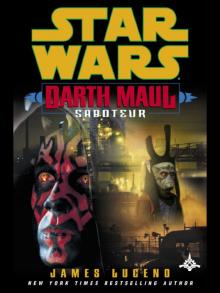 Star Wars Darth Maul: Saboteur
Star Wars Darth Maul: Saboteur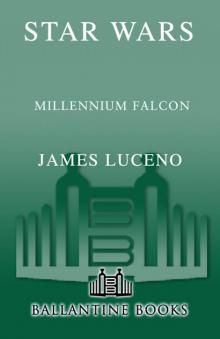 Star Wars: Millennium Falcon
Star Wars: Millennium Falcon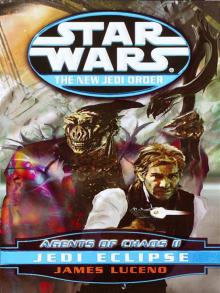 Jedi Eclipse
Jedi Eclipse Star Wars The New Jedi Order - Agents of Chaos II - Jedi Eclipse - Book 5
Star Wars The New Jedi Order - Agents of Chaos II - Jedi Eclipse - Book 5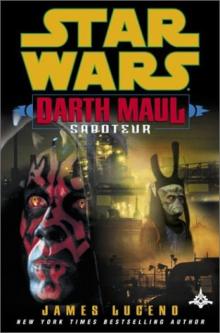 Star Wars - Darth Maul - Saboteur
Star Wars - Darth Maul - Saboteur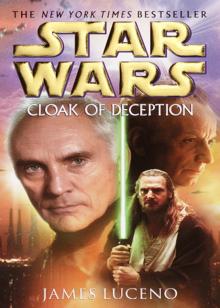 Star Wars: Cloak of Deception
Star Wars: Cloak of Deception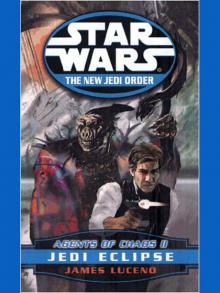 Star Wars: New Jedi Order: Agents of Chaos II: Jedi Eclipse
Star Wars: New Jedi Order: Agents of Chaos II: Jedi Eclipse End Game
End Game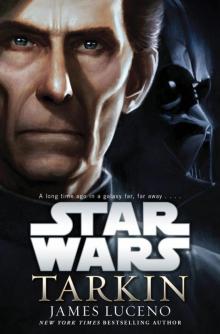 Tarkin: Star Wars
Tarkin: Star Wars Restraint
Restraint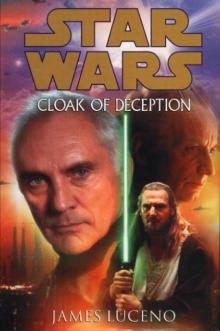 Star Wars - Cloak Of Deception
Star Wars - Cloak Of Deception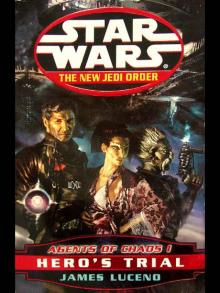 Star Wars: New Jedi Order: Agents of Chaos I: Hero's Trial
Star Wars: New Jedi Order: Agents of Chaos I: Hero's Trial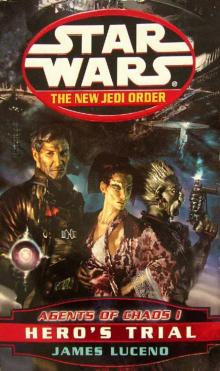 Star Wars The New Jedi Order - Hero's Trial - Book 4
Star Wars The New Jedi Order - Hero's Trial - Book 4 The Essential Novels
The Essential Novels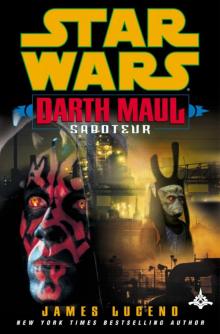 Darth Maul: Saboteur
Darth Maul: Saboteur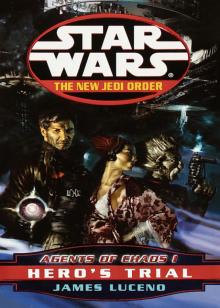 Hero's Trial: Agents of Chaos I
Hero's Trial: Agents of Chaos I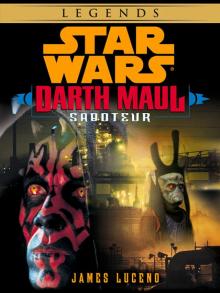 Saboteur
Saboteur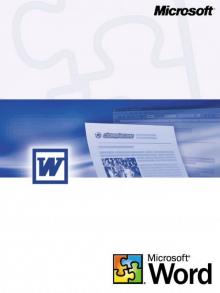 The Unifying Force
The Unifying Force Tarkin
Tarkin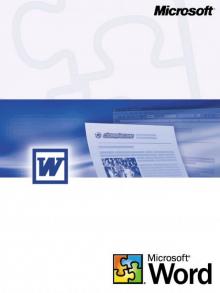 Dark Lord : The Rise of Darth Vader
Dark Lord : The Rise of Darth Vader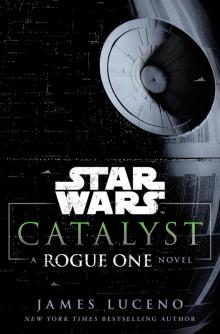 Catalyst
Catalyst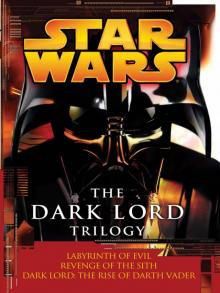 Book 0 - The Dark Lord Trilogy
Book 0 - The Dark Lord Trilogy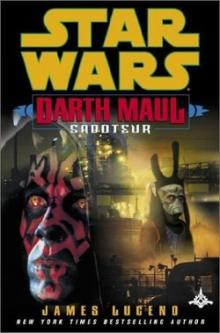 Darth Maul: Saboteur (star wars)
Darth Maul: Saboteur (star wars)